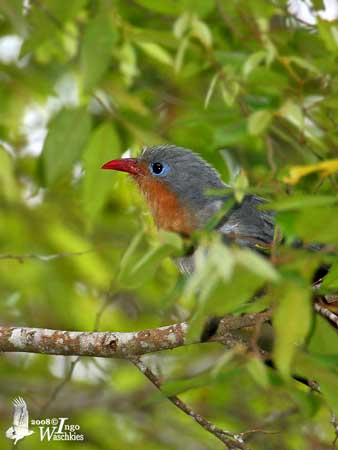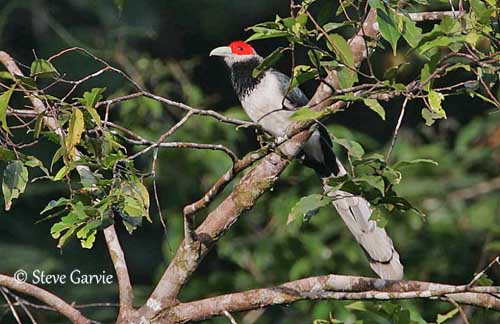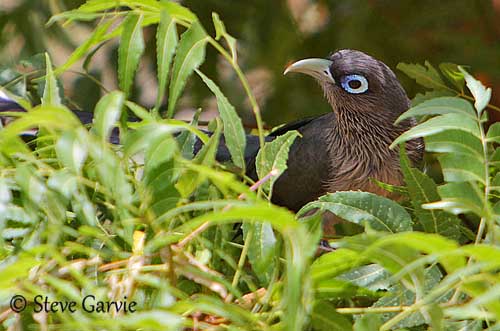
CUCULIDAE FAMILY
Subfamily Phaenicophaeinae
The subfamily Phaenicophaeinae includes two tribes, Phaenicophaeini and Couini. All these species are nest-building, non-parasitic cuckoos of the Old World tropics, and they are mainly found in Southern Asia for the malkohas and in Madagascar for the couas.
We can find three genera, Ceuthmochares, Phaeinicophaeus and Carpococcyx, with in addition the genus Coua in the tribe Couini.
The malkohas are mainly forest species. They frequent primary forest and secondary growth, scrub and bushes, forest edge, plantations, mangroves, grassland with bushes, gardens… They may occur from lowlands to high elevation according to the range.
Photographers :
Jean Michel Fenerole
Photos d’Oiseaux du monde
Steve Garvie
RAINBIRDER Photo galleries
Ingo Waschkies
Bird Photography
Text by Nicole Bouglouan
Sources :
HANDBOOK OF THE BIRDS OF THE WORLD vol 4 by Josep del Hoyo-Andrew Elliott-Jordi Sargatal - Lynx Edicions - ISBN: 8487334229
L’ENCYCLOPEDIE MONDIALE DES OISEAUX - Dr Christopher M. Perrins - BORDAS - ISBN: 2040185607
BirdLife International (BirdLife International)
CREAGUS@Monterey Bay (Don Roberson)
Wikipedia, the free encyclopaedia

Blue-faced malkoha
Phaenicophaeus viridirostris
The three ground-cuckoos of genus Carpococcyx from Sumatra, Borneo and Annam, are mainly terrestrial in their foraging and feeding habits, but they nest in trees.
They are resident in lowland and hill forests, and visible from lowlands up to 900/1400/1700 metres of elevation.
The couas, endemic species to Madagascar, frequent dry and humid forests, thorn scrub and bush, spiny desert, gallery forest on rivers’ edges, savannahs and mangroves. They occur from sea-level to medium and high elevation. They are terrestrial birds but they nest in trees.
The malkohas are mainly insect-eaters. They take numerous large insects’ species, caterpillars and spiders. They may consume tree-frogs and lizards, crustaceans and worms.
The ground-cuckoos also take fruit, small reptiles, small mammals and small birds.
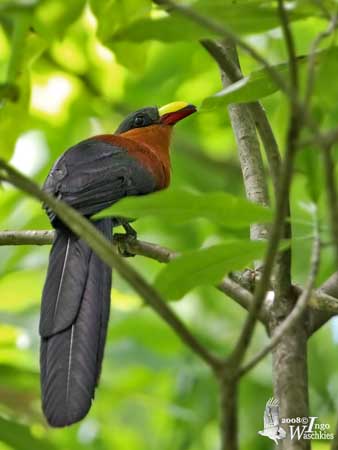
Yellow-billed Malkoha
(formerly Phaenicophaeus)
Rhamphococcyx calyorhynchus
These species usually feed in trees, moving by short hops while the long tail is used as balance, and searching for preys among the dense foliage in thickets and trees.
The Sirkeer Malkoha (Phaenicophaeinae leschenaultii) is more terrestrial and feeds on the ground where it often runs.
All these species often fly from tree to tree when foraging. The large Coral-billed ground-Cuckoo is quick and agile, able to perform strong, rapid flight if disturbed.
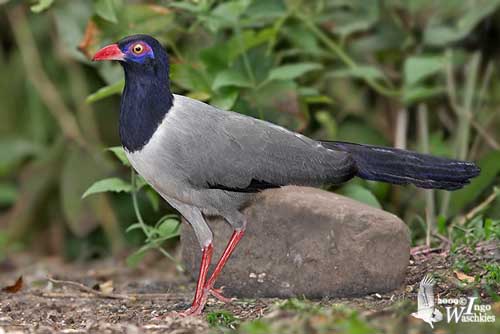
Coral-billed Ground-Cuckoo
Carpococcyx renauldi
The couas feed on insects, but spiders, berries, fruits and seeds are also taken.
The Snail-eating Coua (Coua delalandei) is now probably extinct. This one fed on large forest snails. The shell was broken against a stone with the bill, to obtain food.
Three species are more arboreal and forage in trees. These are the Crested Coua (Coua cristata), the Verreaux’s Coua (Coua verreauxi) and the Blue Coua (Coua caerulea).
The other couas are terrestrial and feed by walking among the leaf-litter on the forest floor or on low branches in trees.
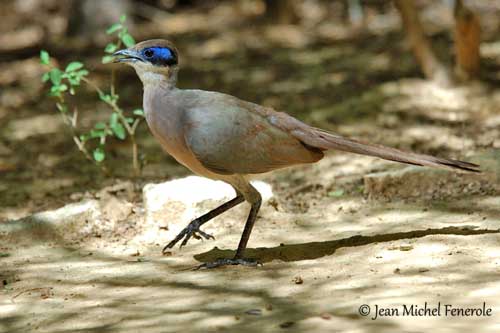
Coua ruficeps
The couas sunbathe regularly, ruffling their feathers and dropping their wings to absorb the heat in sunny areas.
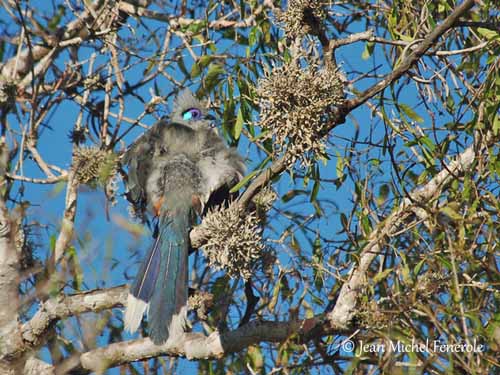
Coua cristata
The malkohas give high-pitched notes uttered in series, but also soft, low, croaking calls and rattles.
The couas call from the ground or low trees. They give deep, guttural, resonant series of calls and also loud, clear phrases and grunts.
SOME SOUNDS BY XENO-CANTO
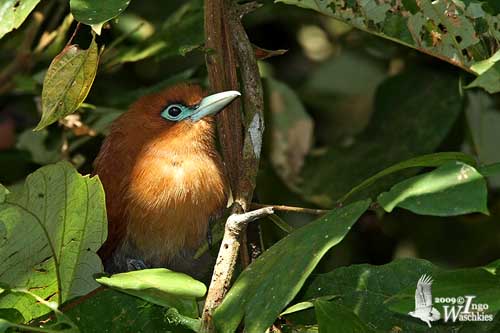
Raffles's Malkoha
(formerly Phaenicophaeus)
Rhinortha chlorophaea
During the breeding season, the cuckoos of tropical regions often call continuously during the hot middle part of the day, when the other birds’ species are resting silently.
The courtship displays are poorly known, but we can suggest that the head pattern with the coloured bare skin and the long tail feathers are enhanced during these displays.
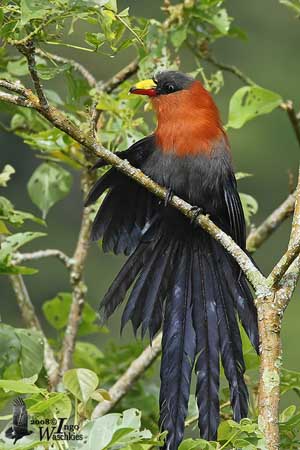
Yellow-billed Malkoha
(formerly Phaenicophaeus)
Rhamphococcyx calyorhynchus
The malkohas nest in trees. They build a shallow saucer or a small platform of twigs, lined with green leaves. The female lays 2-3 chalky white or creamy-white eggs. Both sexes incubate but the period is unknown.
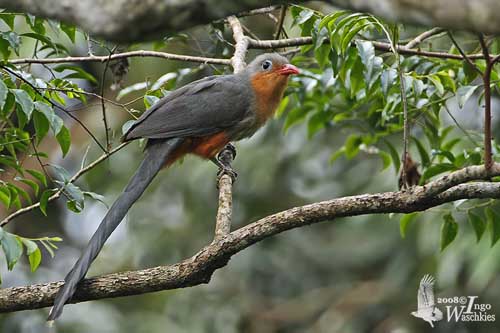
The couas also nest in trees. Both adults build a bowl of twigs, bark and large leaves, dry stalks, palm fibres and rootlets according to the materials found in the surroundings. The bowl is lined with fine vegetation. It is usually placed between one and ten metres above the ground, in tree or bush. The female lays 2-3 dull white eggs.
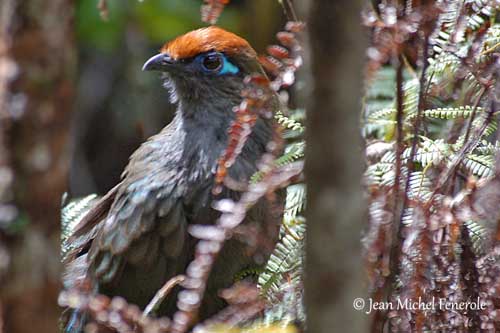
Coua reynaudii
Malkohas and couas are resident in their range.
The malkohas are vulnerable to deforestation throughout the range in SE Asia.
The Sirkeer Malkoha is a rare species uncommon in India.
The Red-faced Malkoha is evaluated as Vulnerable, due to shooting and habitat loss.
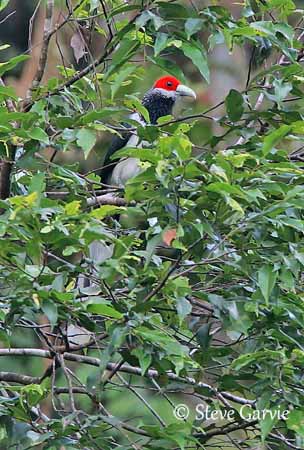
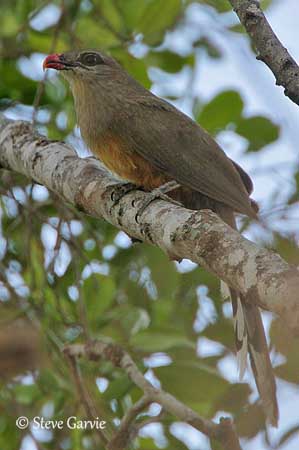
Sirkeer Malkoha
(formerly Phaenicophaeus)
Taccocua leschenaultii
The Sumatran Ground-Cuckoo is Vulnerable and might even be extinct due to destruction of the habitat.
The Bornean Ground-Cuckoo is Vulnerable too, due to continuing degradation and loss of forest.
The Coral-billed Ground-Cuckoo is evaluated as near-threatened due to cagebird trade and deforestation.
The other malkohas are not globally threatened.
The couas are confined in Madagascar and occur mainly on the coastal forested regions of this large island.
They are uncommon to locally common in suitable habitat and protected areas.
The Verreaux's Coua is evaluated as near-threatened. The Snail-eating Coua is almost certainly extinct. The other couas are not globally threatened.
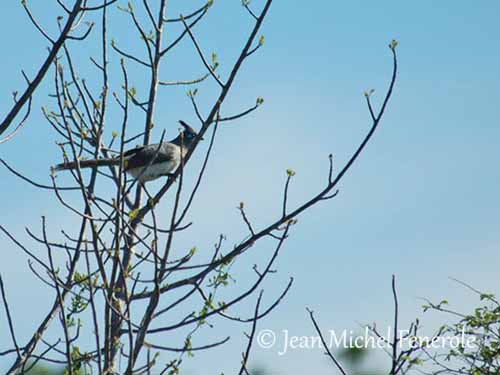
Coua verreauxi
All these species only need quiet forested areas, and in a close future, several other malkohas and couas will disappear due to deforestation and habitat loss.
